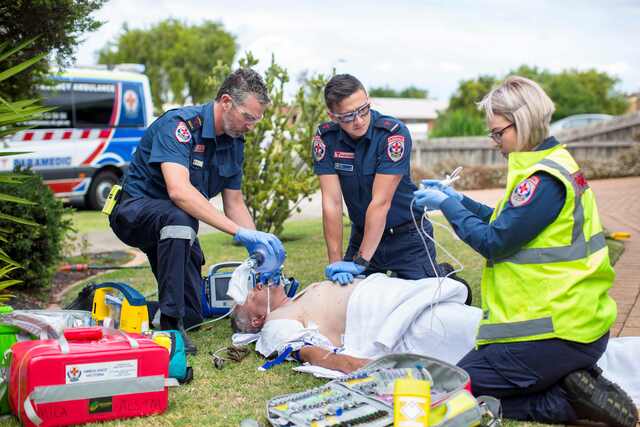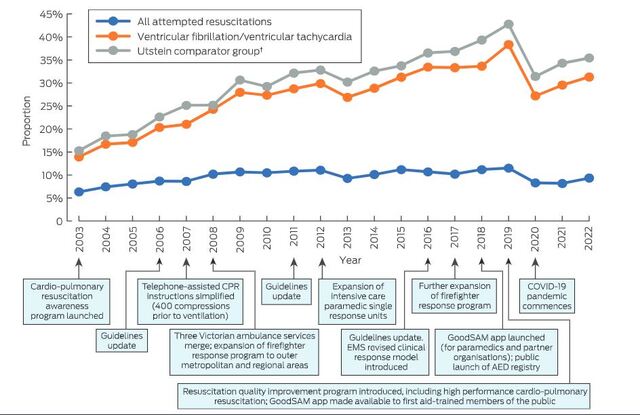
New research shows Victorians are more likely to survive a cardiac arrest compared to 20 years ago, thanks to increased bystander intervention.
The study, supported by Ambulance Victoria (AV), found Victorians who experience a bystander-witnessed initial shockable out-of-hospital cardiac arrest (OHCA) in 2021-22 were three times more likely to pull through than two decades ago.
The Victorian Ambulance Cardiac Arrest Registry (VACAR) was used to assess more than 102,000 OHCA cases attended by emergency medical services in Victoria between 1 January 2003 and 31 December 2022.
The figures showed in 2022 Victorians were 4.5 times more likely to receive bystander cardiopulmonary resuscitation (CPR) compared to 2003.
Rates of bystander defibrillation from publicly accessible automated external defibrillators (AEDs) also increased 22-fold during this time.
AV Director Research and Evaluation Dr Ziad Nehme said the data reflected a positive change in bystander intervention.
“Sudden cardiac arrest is a major public health challenge so it’s great we’re seeing more people willing to jump in and help,” he said.
“We know survival after out-of-hospital cardiac arrest depends on the chain of survival and quick bystander intervention.
“This is why boosting the responsiveness of community members to these events is critical.”
This study is one of the first to examine long term trends in 12-month patient outcomes.
Since 2011, annual follow-up interviews with OHCA patients are completed to assess their health-related quality of life and functional recovery.
Among the 4452 adults discharged from hospital alive during 1 January 2010 – 30 June 2022, 93.3 per cent were alive at 12 months.
Of those who responded to the follow-up enquiry, 85.3 per cent had Glasgow Outcome Scale–Extended scores, indicating good recovery or moderate disability, and 38.5 per cent reported full health.
Dr Nehme said the improved survival rates further supported paramedics’ call for Victorians to be familiar with Call, Push, Shock.
“Victoria has one of the best cardiac arrest survival rates in the world, but we can continue to improve those rates by increasing education,” he said.
“Anyone who witnesses a cardiac arrest should call Triple Zero (000), start chest compressions and, if there’s one nearby, grab a defibrillator and apply shocks as prompted before paramedics arrive.
“In three simple steps you may not only save the patient’s life but improve their quality of life long after the event.”
The research paper is available online at Wiley and was published in the December issue of the Medical Journal of Australia website.







